Key takeaways:
- Immersive experiences engage participants through emotional connections and hands-on activities, transforming traditional learning methods.
- Workshops foster collaboration, real-time feedback, and safe spaces for experimentation, leading to innovative solutions.
- Key elements of effective workshops include storytelling, hands-on participation, and diverse learning modalities to enhance engagement.
- Utilizing technology such as VR and interactive tools can significantly elevate the immersive nature of workshops.
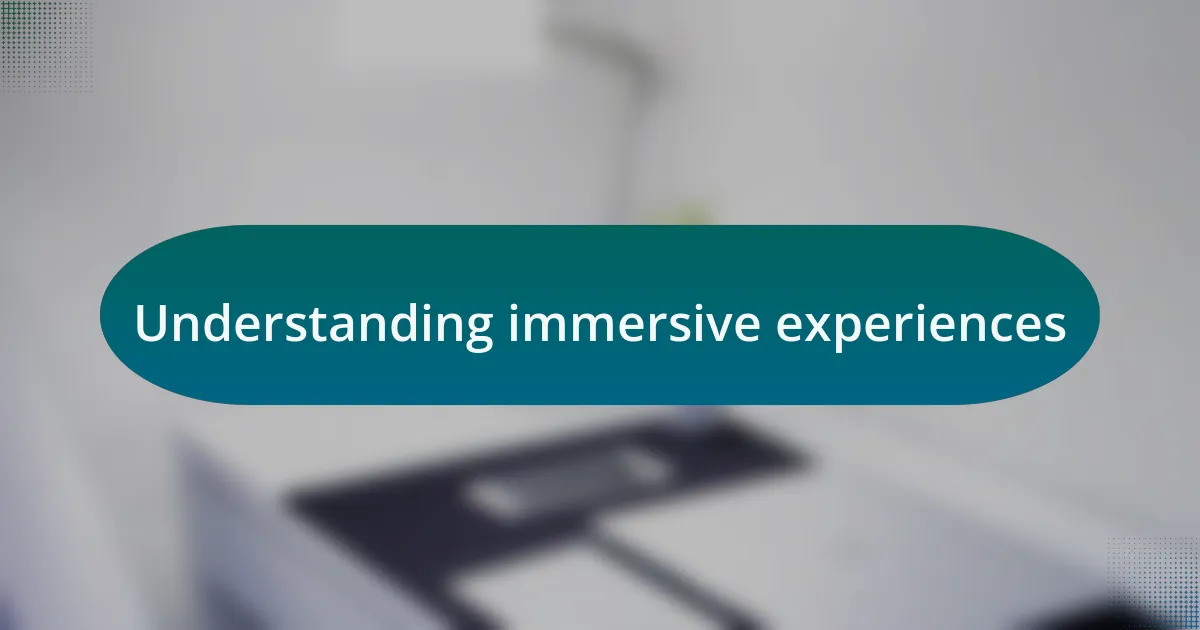
Understanding immersive experiences
Immersive experiences engage all our senses, creating a compelling environment that draws participants in deeply. I recall a workshop I facilitated where we transformed the room into a tech lab—dim lights, buzzing sounds, and hands-on activities. Participants commented on how this atmosphere made them feel like they were part of the innovation process, rather than just observers.
Think about the last time you were truly absorbed in an experience. What made it stand out? Often, it’s the emotional connection we forge with our surroundings and the content. When I design workshops, I aim to evoke a spectrum of emotions from excitement to curiosity, which keeps participants invested and engaged throughout.
To truly understand immersive experiences, it’s essential to think beyond traditional teaching methods. I have seen firsthand how interactive elements, like virtual reality or real-time problem-solving, instantly capture attention. These tools don’t just inform; they transform the way participants perceive and interact with information, leading to a richer learning experience.
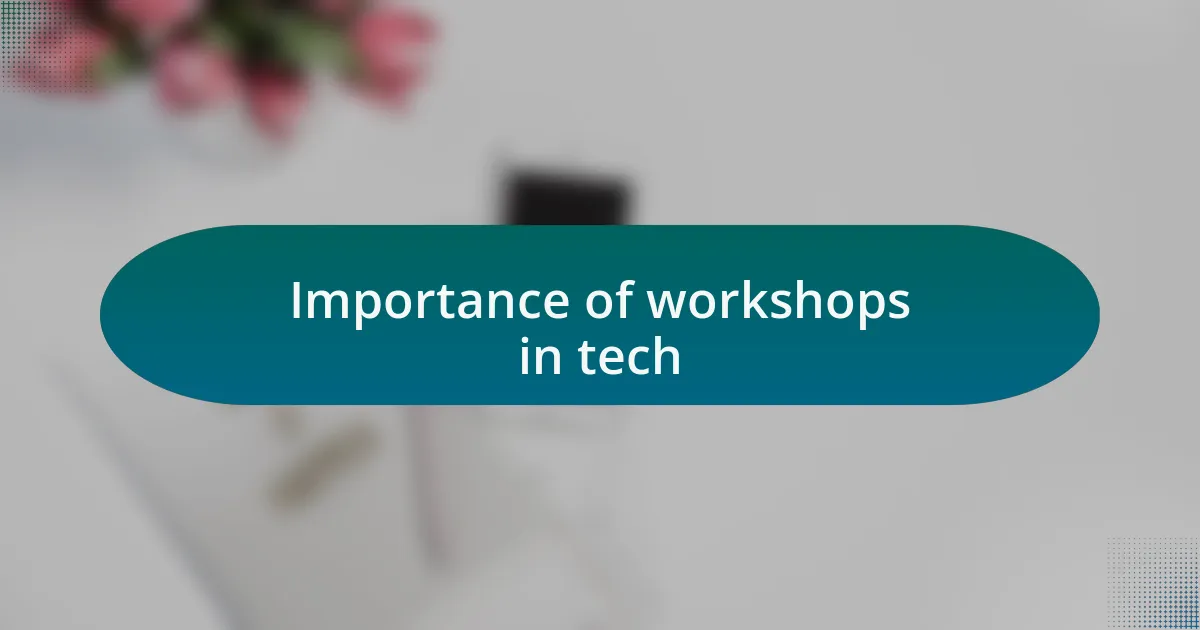
Importance of workshops in tech
Workshops play a crucial role in the tech industry by fostering collaboration and hands-on learning. I remember attending a coding workshop where each participant got to build a simple app. The excitement in the room was palpable as we shared ideas and solved problems together, illustrating how collective knowledge can spark innovation.
The unique format of workshops allows for real-time feedback and adaptation, something traditional lectures often lack. In one instance, I led a group discussion where participants brainstormed solutions to a specific tech challenge. The energy shifted as ideas flowed freely, proving that interactive settings can lead to breakthroughs that benefit everyone involved.
Moreover, workshops create safe spaces for experimentation. I once facilitated a session specifically designed for beginners, and seeing them take risks without the fear of judgment was incredibly rewarding. That experience reinforced my belief that when individuals feel secure, creativity flourishes, leading to unexpected and valuable outcomes. How often do we allow ourselves that freedom to explore without consequence? It’s in these moments that true learning occurs.
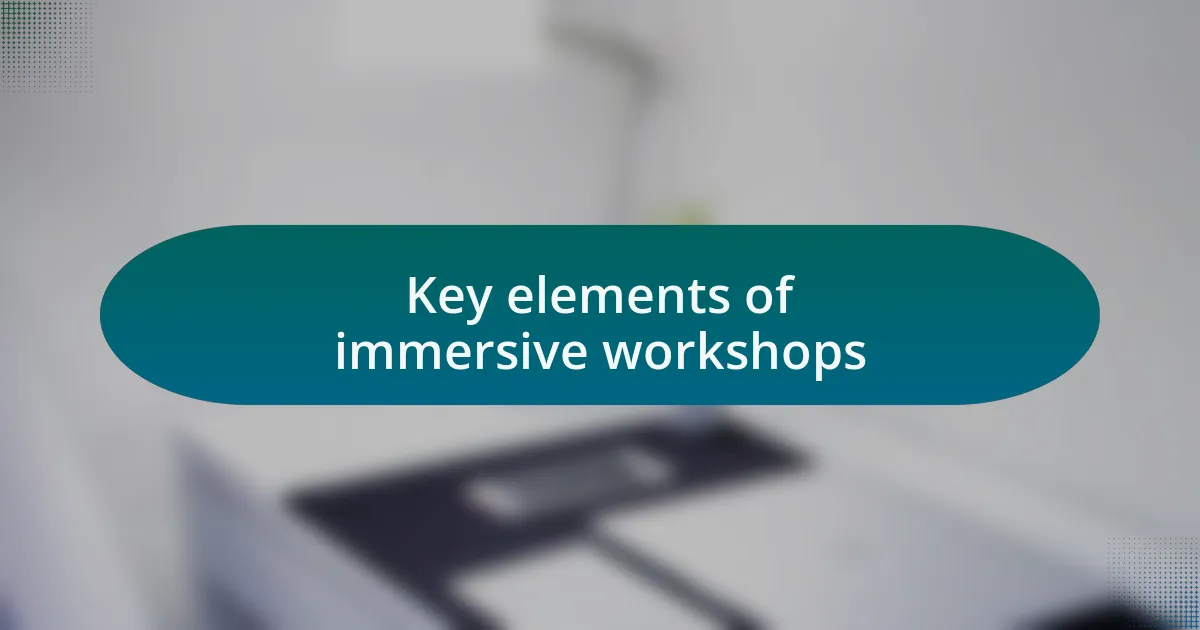
Key elements of immersive workshops
Creating immersive workshops relies heavily on a few key elements that can transform an ordinary training session into an unforgettable experience. First, I believe in the power of storytelling. For instance, during a recent workshop on user experience design, I shared a personal story about a project I encountered that went wrong. It was fascinating to see how this narrative drew everyone in and sparked a rich discussion, reminding us that learning isn’t just about facts—it’s about connecting on a human level.
Another critical element is hands-on participation. I recall one workshop where I challenged participants to develop a prototype within an hour, working in teams. The buzz in the room was electric as they collaborated, experimented, and worked through challenges. This kind of engagement not only drives learning but also builds camaraderie among participants. Isn’t it remarkable how creative solutions emerge when people are actively involved rather than passively listening?
Additionally, providing a variety of learning modalities is essential. In one session I led, we used a mix of visual aids, discussions, and team exercises to cater to different learning styles. Sharing the results of a group activity where one team came up with a wildly innovative idea while others grappled with conventional solutions reminded us that diversity in approaches is invaluable. This variety makes the experience richer and ensures that everyone can find something that resonates with them. How often do you come away from a standard presentation feeling truly inspired? Immersive workshops can change that.

Techniques for engaging participants
Engaging participants in workshops goes beyond just delivering information; it’s about creating an interactive journey. One technique I’ve found effective is breakout sessions. Recently, I facilitated a workshop where participants brainstormed solutions in small groups, each focusing on a different aspect of the topic. This structure allowed for diverse ideas to surface. It’s fascinating how conversations flourish when people feel safe to share in a more intimate setting—do you see how that could spark innovation?
Another approach I enjoy is the use of real-time feedback. In one workshop, we employed live polling tools. As participants shared their thoughts on key concepts, we adjusted our discussions based on their inputs. It’s amazing how responsive engagement can transform the atmosphere. I felt a palpable shift in energy as people realized their opinions directly influenced the flow of the session. It makes participants feel valued, doesn’t it?
Additionally, incorporating gamification elements can significantly enhance engagement. I once used a game to illustrate complex tech concepts, where teams competed to solve challenges. The excitement in the room was contagious, and participants not only learned but also formed deeper connections through friendly rivalry. Who doesn’t love a little competition to liven things up? It’s fascinating how playful interactions can lead to profound learning experiences.
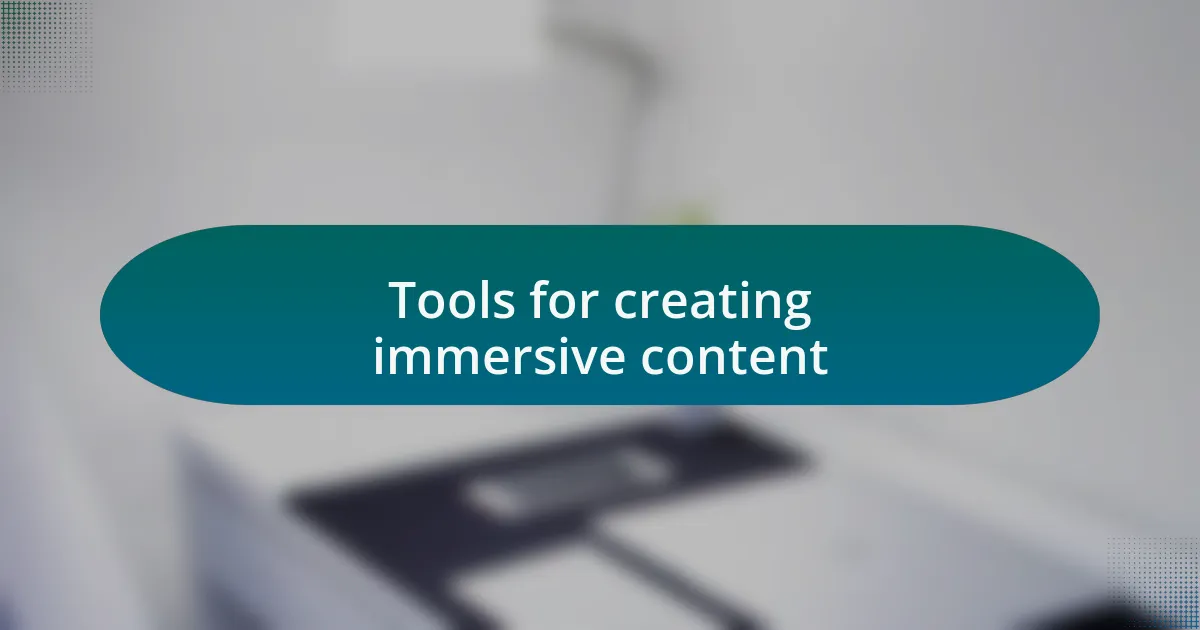
Tools for creating immersive content
Creating immersive content relies heavily on the right tools. I’ve found that using Virtual Reality (VR) can transport participants into entirely different environments. For example, during a recent workshop on customer experience, we used VR to simulate real-life scenarios that participants might face. Watching their faces light up as they immersed themselves in the virtual world was a reminder of how powerful technology can be in shaping understanding.
In addition, I’ve had great success with interactive presentations using platforms like Prezi or Miro. These tools allow for a non-linear storytelling approach, which engages participants by letting them choose their own path through the content. I remember a session where we mapped out a project visually, and participants interacted with the elements on-screen. This involvement created a sense of ownership and investment in the material—don’t you think people are more likely to remember something they helped create?
Finally, leveraging collaboration tools such as Google Jamboard or Slack channels can enhance real-time interaction among participants. In one workshop, we set up a Jamboard where attendees could jot down ideas anonymously. The anonymity encouraged honesty, resulting in insights I hadn’t anticipated. It’s heartening how such simple setups can break down barriers, don’t you think?
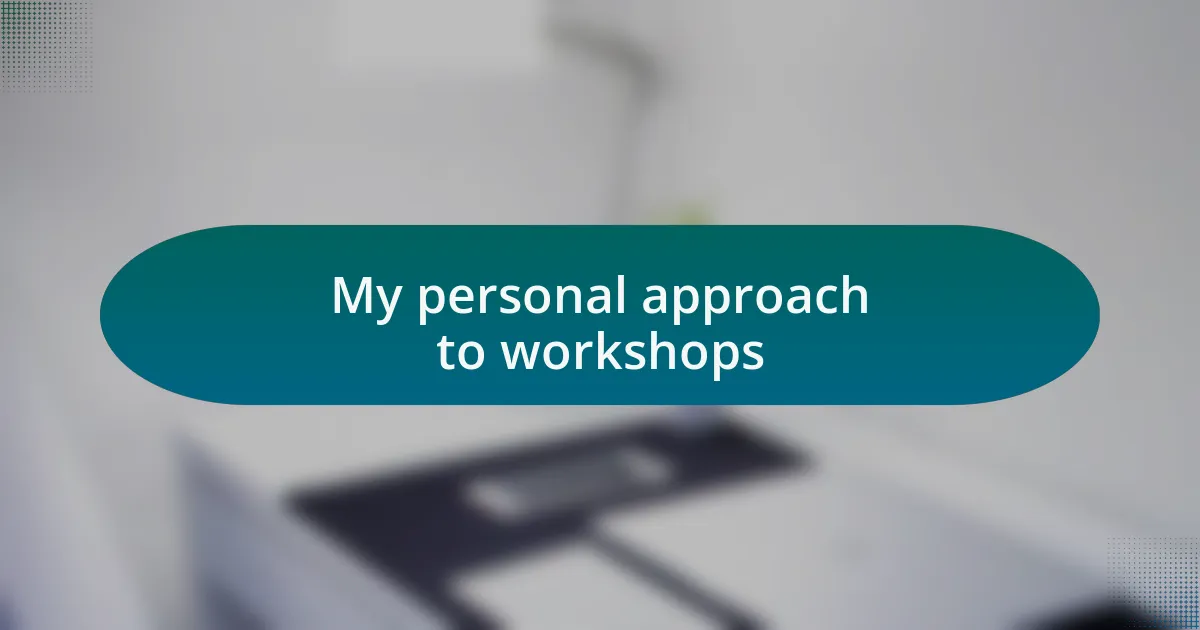
My personal approach to workshops
My approach to workshops centers around creating a safe and open environment where everyone feels comfortable sharing their thoughts. In one of my earlier workshops, I noticed that participants were hesitant to voice their ideas. To nurture an inviting atmosphere, I began each session with icebreakers that allowed everyone to share something personal. The shift was palpable; suddenly, we had a group of individuals eager to contribute. Isn’t it fascinating how a simple act of sharing can foster deeper connections?
I also believe in the importance of adaptability during workshops. Once, while leading a session on team dynamics, I sensed that the planned activities weren’t resonating with the group. Instead of pushing through, I pivoted to a real-time discussion that tapped into their current challenges. This flexibility not only salvaged the workshop but also uncovered invaluable insights that I wasn’t expecting. Have you ever had to adjust your approach on the fly?
Engagement tools play a critical role, but I emphasize human connection above all. During a recent workshop, after breaking into smaller discussion groups, I walked around to listen in on conversations. I found that merely being present encouraged participants to open up even more, leading to richer discussions. It’s that authentic interaction that creates lasting bonds—don’t you agree that at the heart of effective workshops lies genuine human connection?

Case studies of successful workshops
In a workshop I facilitated on digital transformation, I decided to incorporate role-playing exercises where participants acted out scenarios involving new technologies. The result was striking; individuals not only engaged more but also deepened their understanding of the challenges and opportunities technology presents. Have you ever experienced the power of stepping into someone else’s shoes? It was a revelation that left everyone buzzing with ideas.
Another memorable instance was during a workshop focused on innovation. I showcased case studies of companies that successfully embraced change, but what sparked the most excitement was when participants shared their perspectives on these transformations. The room lit up with discussions, where each person felt empowered to contribute their unique viewpoint. Isn’t it amazing how when given a platform, people can inspire each other in unexpected ways?
I also conducted a virtual workshop where we used breakout rooms for brainstorming sessions. Participants could collaborate in smaller groups without the pressure of a larger audience. I noticed that when people felt liberated to speak openly, their creativity flourished. This led to a collaborative project idea that one team later pitched to their management. Have you ever witnessed what happens when the right environment fuels collective creativity? It’s a beautiful sight to behold.